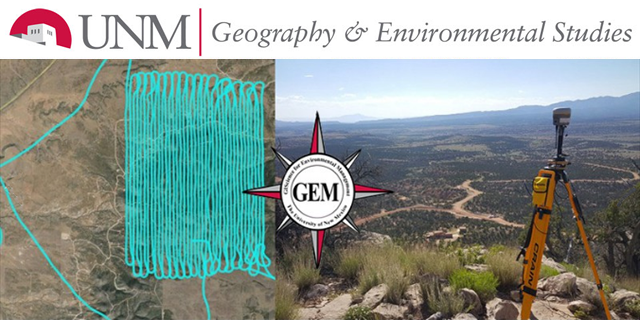
Geography ETDs
Publication Date
Fall 12-16-2023
Abstract
New Mexico's drylands are undergoing notable vegetation changes due to rising aridity, higher temperatures, and shifts in precipitation with changing climate. Mapping drylands through remote sensing is challenging compared to mesic systems due to the irregular patterns of rainfall-driven phenology and weaker vegetation absorption signals. This study aims to enhance vegetation mapping in New Mexico, utilizing a high-resolution, frequently revisited PlanetScope dataset with multispectral capabilities, specifically chosen for its suitability for time-series analysis. The challenge with high spatial and temporal data lies in the overwhelming volume, leading to issues like the curse of dimensionality, overfitting, data redundancy, collinearity, and visualization problems. This study assesses the effectiveness of dimensionality reduction techniques such as Principal Component Analysis (PCA), Minimum Noise Fraction (MNF), Fourier Transform (FT), and Independent Component Analysis (ICA) in transforming phenological time series data for vegetation classification. A null model, without phenological data, serves as a comparison baseline. The classification model related known field plots to a series of variables using a random forest (RF) algorithm in an object-based image analysis (OBIA) framework to map vegetation at the Sevilleta National Wildlife Refuge and East Jemez Area in New Mexico, USA. The study highlighted the importance of using phenological data, where the PCA method had the highest overall accuracy at 53.52%, whereas the null model had 46.71%. PCA might be more appropriate for supervised classification than other methods because it reduces the influence of noise in the data. However, the MNF model performed better in the discrimination of vegetation classes.
Degree Name
Geography
Department Name
Geography
Level of Degree
Masters
First Committee Member (Chair)
Prof. Dr. Christopher D. Lippitt
Second Committee Member
Dr. Caitlin Lippitt
Third Committee Member
Dr. Su Zhang
Document Type
Thesis
Project Sponsors
New Mexico Department of Game & Fish (NMDGF), Center for the Advancement of Spatial Informatics Research and Education (ASPIRE) and Earth Data Analysis Center (EDAC)
Language
English
Keywords
Vegetation Mapping, Object Based Image Analysis (OBIA), Transformation Methods, High Spatial-temporal Time-series data
Recommended Citation
Sharma, Pratistha. "DRYLAND VEGETATION MAPPING USING HIGH SPATIAL-TEMPORAL RESOLUTION SATELLITE IMAGERY IN NEW MEXICO: A COMPARISON OF PHENOLOGICAL TIME-SERIES TRANSFORMATION METHODS." (2023). https://digitalrepository.unm.edu/geog_etds/69
